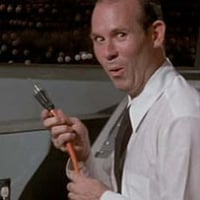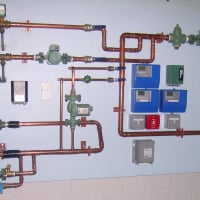Welcome! Here are the website rules, as well as some tips for using this forum.
Need to contact us? Visit https://heatinghelp.com/contact-us/.
Click here to Find a Contractor in your area.
If our community has helped you, please consider making a contribution to support this website. Thanks!
Help with calculating EDR on ci baseboards and system check...
Options
hboogz
Member Posts: 113
Hi all -
Long time lurker and absolutely love the great feedback and information on this site. It's truly remarkable how much I've learned through forum discussions and the articles alone. Thank you all!
Just over 10 years ago when I was a lot younger and in college my parents had to get their boiler replaced. If I'm right, and based on the plethora of info on this site, the boiler they have is grossly over-sized. We have a single pipe , parallel flow system with two 2" mains that stretch about 35' on one side and 16' the other side of the house. We have a Burnham IN6 with an IBR of 450sq ft. I understand piping/pickup factors are accounted for with the NET BTU, which for this model is 108k (gross output is 175k) I've also read and understand that the houses heat loss on steam systems doesn't necessarily play a big role in smaller systems all that much. It's more about the size of the piping and the connected radiation that truly determines how to size your boiler. Again, I'm just an avid DIY'er and not the pro. For what it's worth, we have a semi-detached all brick colonial rowhouse in Queens, NYC.
That being said, I have two 10ft cast iron steam baseboards that I can't seem to find any relevant information on. They are broken up into sections that break down into, 48"+36"+18"+18", but are piped together and act like a single rad. I've attached the pictures below. For good measure I've also attached the rads that currently populate the house (forgive the construction I'm working on a never ending remodel)
Could use a hand on finding the EDR of both of the rads to get a firm EDR number and then calculate how over-sized I am. I understand there are ways to downfire the boiler, but the "pro's" in my area are a dime a dozen and if there are any they are tied up for months at a time. That's to say I don't feel comfortable doing that but am open to anything else to get the system running as efficiently and quietly as possible.
I've also added pictures of my system along with the recent additions of the main vents I added this season. The shorter main had a plug while the longer main had an hoffman 45, which was gracefully decommissioned. On the shorter main I now have one Hoffman 75 and on the longer main I have one Gorton #2. I've also purchased all new gorton radiator valves. On the 2nd floor (top floor) on the short side of the supply main, I've added two Gorton #6. On the long cast iron rads I've added a Gorton C on each (The rads are in a living area that's large and tall (23' x14' ) and the Tstat is on the other side of the room. Downstairs on the first floor I plan on using all Gorton 4's and 5's. I also revived some 1" radiator runs that were buried years ago which i discovered when tore out the flooring to reinforce all the joists. I understand on 1" pipes my max EDR is 20 so I plan on finding radiators that meet that load requirement and will calculate that into the total EDR for the house.
Thanks for looking.
Harry.
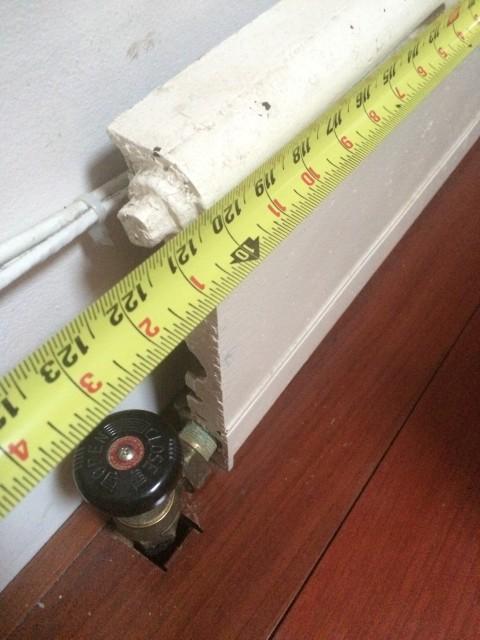

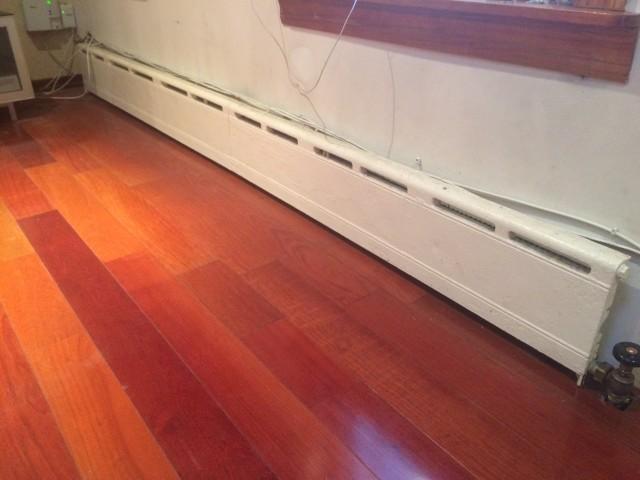


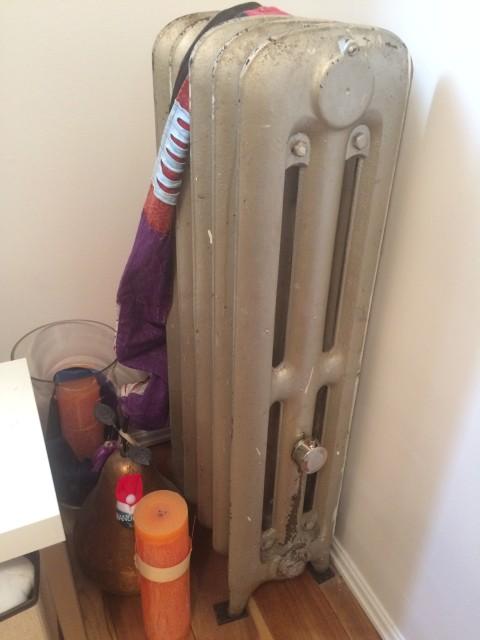

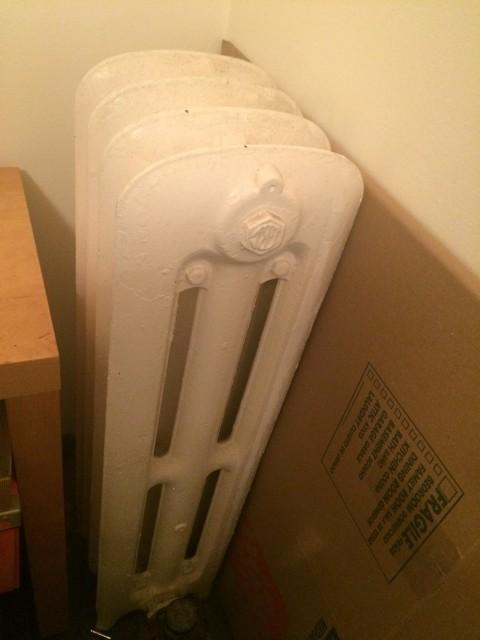

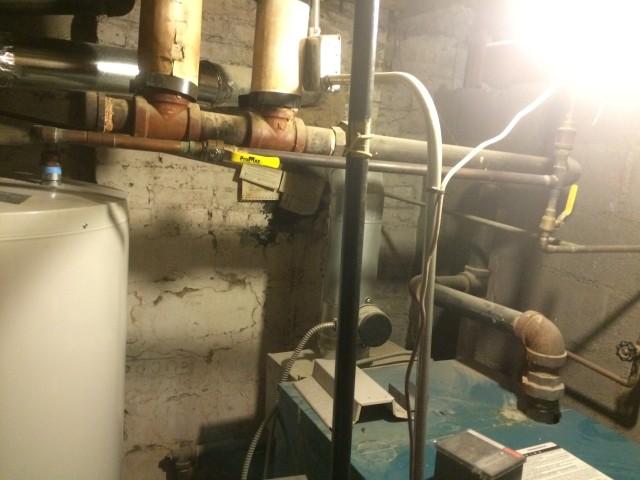
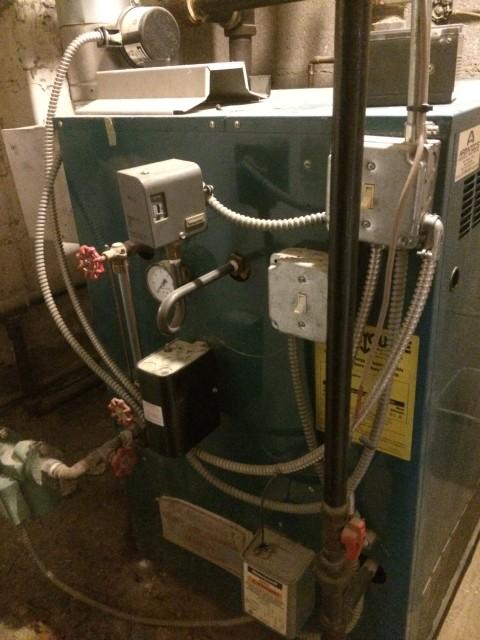






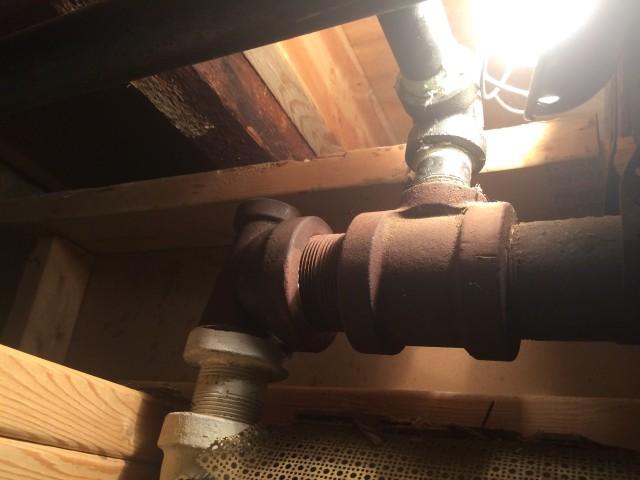

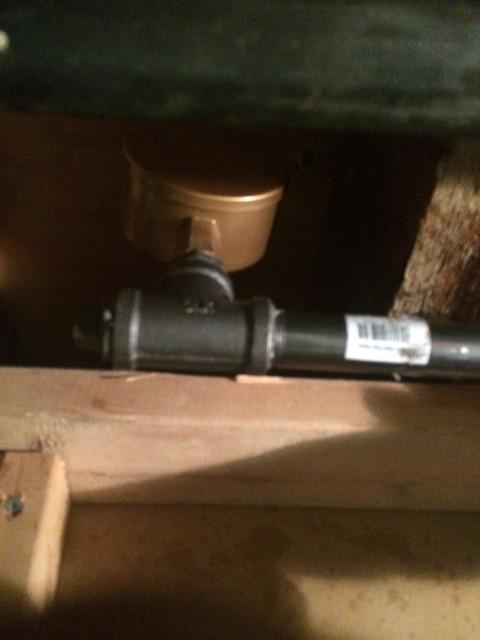
Long time lurker and absolutely love the great feedback and information on this site. It's truly remarkable how much I've learned through forum discussions and the articles alone. Thank you all!
Just over 10 years ago when I was a lot younger and in college my parents had to get their boiler replaced. If I'm right, and based on the plethora of info on this site, the boiler they have is grossly over-sized. We have a single pipe , parallel flow system with two 2" mains that stretch about 35' on one side and 16' the other side of the house. We have a Burnham IN6 with an IBR of 450sq ft. I understand piping/pickup factors are accounted for with the NET BTU, which for this model is 108k (gross output is 175k) I've also read and understand that the houses heat loss on steam systems doesn't necessarily play a big role in smaller systems all that much. It's more about the size of the piping and the connected radiation that truly determines how to size your boiler. Again, I'm just an avid DIY'er and not the pro. For what it's worth, we have a semi-detached all brick colonial rowhouse in Queens, NYC.
That being said, I have two 10ft cast iron steam baseboards that I can't seem to find any relevant information on. They are broken up into sections that break down into, 48"+36"+18"+18", but are piped together and act like a single rad. I've attached the pictures below. For good measure I've also attached the rads that currently populate the house (forgive the construction I'm working on a never ending remodel)
Could use a hand on finding the EDR of both of the rads to get a firm EDR number and then calculate how over-sized I am. I understand there are ways to downfire the boiler, but the "pro's" in my area are a dime a dozen and if there are any they are tied up for months at a time. That's to say I don't feel comfortable doing that but am open to anything else to get the system running as efficiently and quietly as possible.
I've also added pictures of my system along with the recent additions of the main vents I added this season. The shorter main had a plug while the longer main had an hoffman 45, which was gracefully decommissioned. On the shorter main I now have one Hoffman 75 and on the longer main I have one Gorton #2. I've also purchased all new gorton radiator valves. On the 2nd floor (top floor) on the short side of the supply main, I've added two Gorton #6. On the long cast iron rads I've added a Gorton C on each (The rads are in a living area that's large and tall (23' x14' ) and the Tstat is on the other side of the room. Downstairs on the first floor I plan on using all Gorton 4's and 5's. I also revived some 1" radiator runs that were buried years ago which i discovered when tore out the flooring to reinforce all the joists. I understand on 1" pipes my max EDR is 20 so I plan on finding radiators that meet that load requirement and will calculate that into the total EDR for the house.
Thanks for looking.
Harry.




















0
Comments
-
The 10" tall cast baseboard has 3.4 sq ft. per linear foot.
0 -
It is not recommended Baseray be installed in a One pipe steam system... per the install manual: http://www.usboiler.net/us-boiler-product-io-manuals-documents.html#doc-product-baseray-baseboard-radiator
unless piped with two pipes as shown in the Lost Art of Steam Heating book.
how do they heat? and do they make noise?1 -
Thanks for the doc Eric! I was reading usboilers other document on calculating EDR and didn't come across this in my search.
I imagine there are a few things that are not quite recommended or right going on, but to quite honest, they've always heated evenly. I would say the type of radiator valves on them have affected the sound -- but i suspect a lot has to do with the fact that the mains weren't properly vented. Also, I can remember hearing water sloshing around occasionally. I believe this was a modification made in the 60's or 70's since my parents bought the house in the early 80's and this was already in place.
0 -
Based on all the radiators it looks like I have the 38"H x 9"W three column type which provides 5sq ft per section.
Upstairs would then equal: 35+25+34+34 = 128sq ft
Downstairs would then equal: 35+20+35+35+20+20 = 165
(The two 20's yet to be installed and will be on 1" branches)
Total EDR would then equal 293sq ft and the IN6 is rated for 450sq ft. That would mean the boiler is 65% oversized. Ouch.
I've read in these cases to make sure everything is uninsulated to counterbalance the oversizing. Is that right?
Also, I have this branch off the main coming up into the bathroom but no one has touched it. How can get this up and running? Can I reduce to 1 1/4 and get a baseray mounted on the wall or drill a 1/8 tapping for a radiator valve?
Thanks!
0 -
Also, I doubt this boiler has ever been skimmed. I believe I could thread the safety valve off and take the elbow off as well. Thread a 1" short nipple, tee and thread the safety on top of the tee and skim. Once done I put a plug on the end of the tee. Sound about right?
0 -
All - I performed a 2 hour skim of the boiler and replaced the PA404 which was faulty with a new PA404. As noted above, I also added a hoffman 75 on the 16' main and 1 Gorton #2 on the 35' main. When the system calls for the heat, the main vents are silent and warm, but all the radiator vents are purging/hissing air really loudly. I replaced all rads with Gorton's.
The boiler is oversized and I don't even have all the rads connected since we are renovating. I also have the pressuretrol set to .5/1 - Is there anything I could do to quiet the purging of air from the rads?
Should I explore adding two vents to the loudest rads to vent faster?
Should i replace the PA404 with a vaporstat and run that at 4/12oz?
Should I add more main venting?
0 -
First thing is first your boiler is not piped correctly at all which is adding to the misery. As was said the baseboard is supposed to piped as two pipe, not single. Being 65% oversize is not that bad, you could add a two stage gas valve to control that better.
Minimum piping specs belowDL Mechanical LLC Heating, Cooling and Plumbing 732-266-5386
NJ Master HVACR Lic# 4630
Specializing in Steam Heating, Serving the residents of New Jersey
https://heatinghelp.com/find-a-contractor/detail/dl-mechanical-llc
https://m.facebook.com/DL-Mechanical-LLC-315309995326627/?ref=content_filter
I cannot force people to spend money, I can only suggest how to spend it wisely.......0 -
Dave- Thanks a lot for your response. You do tremendous work so I appreciate you commenting on my setup.
I've up to chapter 7 of the LAOSH and have to say in the 7 chapters I've learned so much. Really grateful to all the helpful folks on here.
I believe i have a "bullhead tee" that's connecting both the equalizer and into the headers. Looks like someone wanted to avoid the copper feed and got creative with piping.
In the past few years I've been dedicating more effort into taking care of the property that my parents have owned for many years. Unfortunately not everyone they hired along the way knew what they were doing or cared much about their work, so forgive me as I continue this work in progress.
0 -
Hattersguy - Thank you so much! I would not have thought I could drill the cap but it makes it easier for me to practice drill+tapping on a few spare caps instead of the pipe!
I've never done the drill and tap before, any kits you can recommend?0 -
Hattersguy - I came across another thread about how there are bad Gortons at times. Since I replaced all rads with new Gortons, the one that makes the most noise appears to be bad. When the Tstat is in recovery and the system is recovering from a setback (no bigger than 3 degrees) all the rads hiss a bit as they are purging air, but this one screams badly. I observed yesterday that all fins were hot, top to bottom, and the valve just kept releasing steam. It eventually closed, but I don't think it should be operating that way.
0 -
This is wonderful. I'm sure once i'm actually doing the work it will make more sense. Next up is figuring how guys get that rope taught on this main to prevent scolding.Hatterasguy said:It's quite easy on a cap where you can position the drill vertically.
Use a center punch to get the drill bit to have a steady position in the center of the cap.
Drill the cap thru with a brand new .125" bit.
Drill it again with with a "Q" bit. Or, a 21/64" will suffice in a pinch.
Tap it carefully with a 1/8"-27 NPT tap using a bit of oil on the threads. Don't go too deep with the tap or the vent will run out of threads.
Install the vent before you climb up on the ladder to install the cap............... 0
0 -
Thanks Hattersguy. I believe I can come off the pigtail with a brass 1/4" tee. both sides add black 2" or 3" nipple, brass 90 elbow into the pressuretrol and into the gauge, so they are side by side, if space allows for it.
0 -
Thanks. I'm no steamfitter or plumber for that matter, but have my share of DIY/homeowner experience.
I'd love to actually re-pipe the entire boiler but it's approaching winter and feel I still need some more practice/knowledge.0 -
Bump. I'm also trying to determine existing whole house BTU/hr CI baseboard capacity of my existing HW system, compare that with heat loss calculation, etc.
I'm getting conflicting results for CI baseboard BTU/hr from two sources. Assuming HW temp of 170 degrees.
Looking here ... https://www.google.com/url?sa=t&rct=j&q=&esrc=s&source=web&cd=1&ved=2ahUKEwix9v_j-qLkAhUmwlkKHaMCBssQFjAAegQIABAC&url=https://us.v-cdn.net/5021738/uploads/editor/6r/h97cadrtsyzq.pdf&usg=AOvVaw3azZi4rn0rej9SMGMRzA7I
Using 3.4 / ft recommended above and a length of 10 ft, BTU/hr comes to 3.4 x 10 x 150 = 5100.
Looking here ... https://files.gitshare.io/link/rBDNg1g1CSM/Radiator-Baseboard Product Data Sheet.pdf
Burham is saying 440 BTU/hr per foot = 4400.
15% difference. Call it good enough for estimating?
0 -
I would use the burnham calculations for the burnham baseboard. Better to stay with manufacturers specs. Though I find the tolerances of accuracy in heatloss calculations to be very high. So finding a 15% variable in two different systems does not sound unreasonable to me. Some heatloss methods seem to be less accurate and run high to compensate. After a while you learn to make mental adjustments when using some methods based on past results and comparisons to other heatloss programsI am the walking Deadman
Hydronics Designer
Hydronics is the most comfortable and energy efficient HVAC system.0
Categories
- All Categories
- 87.3K THE MAIN WALL
- 3.2K A-C, Heat Pumps & Refrigeration
- 61 Biomass
- 427 Carbon Monoxide Awareness
- 119 Chimneys & Flues
- 2.1K Domestic Hot Water
- 5.8K Gas Heating
- 114 Geothermal
- 165 Indoor-Air Quality
- 3.7K Oil Heating
- 76 Pipe Deterioration
- 1K Plumbing
- 6.5K Radiant Heating
- 395 Solar
- 15.6K Strictly Steam
- 3.4K Thermostats and Controls
- 56 Water Quality
- 51 Industry Classes
- 50 Job Opportunities
- 18 Recall Announcements
